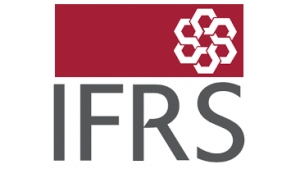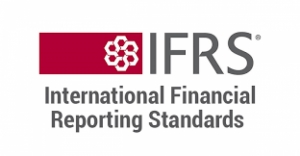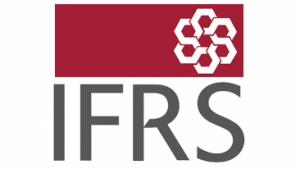عرض العناصر حسب علامة : FASB
الأحد, 12 ديسمبر 2021 18:47
الاتصال والعمل الأساسي والتقارب -ما التالي لمعايير المحاسبة الدولية لإعداد التقارير المالية؟
ألقى أندرياس باركو، رئيس مجلس معايير المحاسبة الدولية (IASB)، كلمة أمام المندوبين في مؤتمر AICPA وCIMA حول التطورات الحالية لـ SEC وPCAOB في 7 ديسمبر في واشنطن. في خطابه، أوجز أولويات IASB الفورية والمستقبلية، وتحدث عن الأهمية المتزايدة لقضايا الاستدامة في التقارير المالية وتبادل وجهات نظره حول التقارب مع FASB.
معلومات إضافية
-
المحتوى بالإنجليزية
Connectivity, core work and convergence—what next for IFRS Accounting Standards?
Barckow Andreas
Andreas Barckow, Chair of the International Accounting Standards Board (IASB), addressed delegates at the AICPA and CIMA Conference on Current SEC and PCAOB Developments on 7 December in Washington. In his speech, he outlined the IASB’s immediate and future priorities, talked about the growing importance of sustainability issues in financial reporting and shared his views on convergence with the FASB.
Good afternoon, it is a pleasure to be with you today. My name is Andreas Barckow, and since July this year I have served as Chair of the International Accounting Standards Board, or IASB. The IASB is the independent standard-setting board of the IFRS Foundation, which is responsible for IFRS Accounting Standards required for use by more than 140 countries.
Although US companies are required to use US GAAP, many have international subsidiaries that report using IFRS Accounting Standards. Moreover, US investors investing internationally are prolific users of financial statements that comply with IFRS Accounting Standards. Your views matter to us, so please continue getting involved in our work.
Given the role IFRS Accounting Standards play in United States, I’ll focus my comments on three strategic topics: sustainability, our current and future work programme and convergence.
Sustainability-related financial disclosures
First off is sustainability. It might seem odd for the Chair of the IASB to begin by talking about sustainability. However, the principle-based nature of IFRS Accounting Standards means that sustainability issues such as climate change and other emerging risks are already covered by our existing requirements, even though such risks are not explicitly referenced—companies are required to consider sustainability-related matters in their financial statements when their effect is material to users of the financial statements.
About a year ago we published educational material that highlighted the potential relationship between current requirements in IFRS Accounting Standards and climate-related matters. The bottom line is that even if a Standard does not say ‘this applies to risks and obligations arising from climate-related matters, too’, those requirements need to be considered. Topics covered in the November 2020 educational material include impairment, provisions, and insurance contract liabilities—and some less obvious points like risks arising from financial instruments. I highlight this material as a reminder that climate change risk is an issue for today, not just for tomorrow.
Sustainability has become a mainstream topic for every company board of directors. The topic is making its way from the investor relations and communications functions straight to the finance department, and for good reason—it is here where robust processes and controls resides. So, for those involved in financial reporting, let me assure you—sustainability is going to become part of your day job—if it isn’t already!
Earlier today, you may have heard my colleague Lee White talk about a new sister-board to the IASB, known as the International Sustainability Standards Board, or ISSB. The creation of the new board was announced last month at the COP26 climate conference and welcomed by more than 40 jurisdictions around the world, including the United States. Its purpose is to develop a comprehensive global baseline of investor-focused, sustainability-related disclosure standards for the global capital markets. It will be up to each jurisdiction to decide whether and how to incorporate the global baseline into their own requirements, and there will be no requirement for the jurisdiction to be using IFRS Accounting Standards.
To facilitate a running start of the new Board, the ISSB will benefit from recommendations to create two standards—one on climate-related disclosures and one on general disclosure. These recommendations—or prototypes—have been developed in a joint effort by the IASB and leading investor-focused sustainability organisations. And we are truly delighted that two of these organisations, the Value Reporting Foundation—home of integrated reporting and SASB Standards—and the Climate Disclosure Standards Board will become part of the ISSB.
While both the ISSB and the IASB will be independent, our Trustees have made clear that the two Boards are expected to work in very close cooperation to drive compatible reporting from the outset. This is a message that we have also heard loud and clear from our stakeholders and advisory bodies—connectivity between accounting requirements and sustainability disclosure requirements is essential. The left hand must work in sync with the right. Hence, we will strive to make our Standards compatible and complementary—to facilitate seamless reporting by companies to provide investors with a comprehensive, decision-useful set of information.
However, there is also clear delineation between our responsibilities. The IASB is predominantly focused on reporting transactions and events that have taken place up until the reporting date; the ISSB’s focus is on risk and opportunities that could impact the company’s future value and cashflows. We must work to avoid gaps, frictions or unnecessary overlaps in the two boards’ literature. The two types of information should neatly fit together like two pieces in a puzzle.
As I said at the outset, the topic of sustainability disclosures is very likely to be coming your way if it hasn’t already. If you want to stay up to date with our sustainability work, then create an account on our website and choose to follow sustainability.
Current work programme and future direction
Working with the ISSB will be important, but we also have a lot to get on with ourselves. And the arrival of a new Chair does not mean we throw everything done to date overboard and start afresh. So, let me touch on some of the bigger projects on our current agenda, before looking at our future agenda.
The last 18 months have been intense for everyone given the enduring pandemic. We have asked a lot from our stakeholders, having published several consultation documents for comment, even though we have provided longer comment periods than normal. I want to thank everyone for their invaluable input—writing comment letters, engaging in fieldwork or participating in outreach events. We are now discussing the feedback we have received. Let me highlight three key projects—Primary Financial Statements, post-implementation reviews and Goodwill and Impairment.
Primary Financial Statements
Our Primary Financial Statements project consists of three key elements—creating a better structure for the statement of profit or loss by introducing an operating, an investing and a financing category of income and expenses and requiring companies to present two new subtotals; improving the way companies aggregate and disaggregate information; and requiring the disclosure of information of some management-defined performance measures—that is, performance measures not specified by IFRS Accounting Standards. We also have proposed limited changes to the statement of cash flows to improve consistency in classification by removing options.
Overall, the proposals have been well received. Surely, there have been concerns regarding some of the details and requests for clarification, but nothing so earth-shattering that we would see a need to go back to the drawing board completely. The IASB started its deliberations of the feedback in spring this year, and while we are making good progress, we will certainly spend the next year, too, to get us through all the feedback and make decisions.
Post-implementation reviews
Next are what we call post-implementation reviews, or PIRs. Our due process requires us to conduct a post-implementation review of any new Standard or major amendment two to three years after the pronouncement has become effective. The objective of such reviews is to assess whether the Standard is working as the IASB had intended and not to reopen rounds of known arguments.
We deliberately allow time for practice to develop before we review the requirements. Concerns raised in the early days after new requirements are introduced are often resolved without the need for us to get involved through standard-setting. This is of course a balancing act—issues may arise that require us to act before we get to the review stage. But as a global standard-setter we must be mindful of the challenges that arise when we do act. Every change affects tens of thousands of companies across 100+ jurisdictions. That is the main reason why the reviews don’t begin until after a reasonable time has passed.
We are currently working on two such reviews: the first is on our suite of consolidation Standards—IFRS 10, 11 and 12— and the second is on our financial instruments Standard, IFRS 9, which we have just initiated.
Overall feedback on the consolidation Standards indicates they are working well—somewhat contrary to the heated debates during the development of the Standards. Not everyone agreed with the changes that were brought in at that time, but initial concerns have largely gone away. Suggested improvements are mainly limited to specific areas of application, and we will consider whether and how to best address them. This is a good example of why it is best to let practice develop before considering making changes to new requirements.
Our financial instruments Standard became effective in 2018, so it would be about time to start the PiR. Yet, given the new impairment approach, we decided to postpone the review of those provisions to gather further evidence of how the Standard responds to the challenges posed by the current pandemic. We are, therefore, focusing on the classification and measurement requirements first and will consider the remaining requirements later. One area of particular interest we are looking at now concerns financial instruments with ESG features. We are aware that these are becoming increasingly popular, so we want to make sure that our existing requirements can be applied to them and produce meaningful results.
Goodwill and Impairment
The third project I will touch on from our current work plan is Goodwill and Impairment, which is actually a follow-up from the PIR on IFRS 3, our Standard on business combinations. The IASB published a discussion paper on this topic in March 2020. At that time, the IASB had concluded that the existing impairment provisions could not be significantly improved rather than making changes at the fringes. Having concluded that we couldn’t respond to investors’ concerns about post-acquisition performance by improving the effectiveness of testing goodwill for impairment, we shifted gears and asked whether companies can—at a reasonable cost—provide investors with more useful information about the acquisitions they make to help them assess whether they have been a success.
I should mention that the IASB also considered whether it should change the subsequent accounting for goodwill and revert back to an amortisation model. However, it was pretty much evenly split between those wanting to retain the existing impairment-only approach, and those wanting to have another look at amortisation, so did not propose any changes in the discussion paper. When looking at the feedback, it is evident that our stakeholders are equally divided over that question, with no clear trend being visible by jurisdiction, industry or professional background. My takeaway from that is that there is no perfect solution; both approaches have their benefits and drawbacks.
The IASB’s primary objective to bring transparency to the subsequent performance of a business combination was received well by users and less well received by preparers. Their concerns are ranging from an inability to track the performance of the acquired business to having to provide potentially company-sensitive and forward-looking information. Given the robustness and diversity in views, finding a solution is truly challenging. One approach we are considering is to investigate a package of disclosures that could substitute, at least in part, the perceived loss of information that proponents of the impairment-only approach fear when abandoning that model. Over the coming months, we will be testing sample disclosures with preparers, auditors and users and seek their feedback before making any hardwired decisions.
There is another dimension to this project—our colleagues at the FASB are also reviewing their goodwill literature and have tentatively reached a different conclusion to the IASB. Given that our pronouncements on business combinations are largely converged, an important consideration is to investigate how we can stay aligned. I will come back to this issue at the end of my speech.
Agenda consultation and future work programme
We are committed to completing the projects on our current agenda, but we are also looking at our future work programme. Our future work and priorities will be guided by feedback from our latest agenda consultation. This is a process we are required by our due process to undertake every five years—to seek views on whether we’ve got the right balance in our work and views on which issues we should prioritise.
Our consultation ran from March to September and was targeted at our future agenda covering the period from 2022 to 2026. We have received great feedback from all corners of the world. Our staff are still working through feedback received. Some key themes are already becoming clear— ‘be mindful how much change you impose on stakeholders; reserve time for working with the new ISSB as well as on emerging issues; and do something on intangibles.’ Especially the last message is music to my ears, because I have long held the view that we must improve the transparency around intangible items.
Encouragingly, stakeholders think our strategic direction and balance of activities are about right—that is focusing approximately half of our resources on working on new projects and devoting the remaining time on maintenance and supporting consistent application; on our private company Standard, the IFRS for SMEs Standard; on digital financial reporting; on understandability and accessibility; and on stakeholder engagement. Some stakeholders want us to focus slightly less on developing new requirements and more on maintaining the Standards and supporting consistent application, but overall stakeholders seem to be happy.
New projects our stakeholders have suggested as high priorities for our future work plan include work on climate-related risks (including pollutant pricing mechanisms), cryptocurrencies and related transactions, going concern, intangible assets and the statement of cash flows. We yet need to determine whether these issues are all for us—some items in this list may be better suited to the ISSB or may be areas to be considered jointly—and whether and how we should approach them. I have already confessed that I am very interested in starting work on intangibles. It’s a thorny issue but one where I think transparency is utterly needed and where I am sure we can make improvements.
Some of the projects I have mentioned in relation to both our current and future work plan are topics the FASB has also received similar feedback on or are linked to projects the IASB and the FASB have worked on together in the past.
Convergence
Let me therefore finish by saying a few words about our work with colleagues at the FASB—and about convergence. When the IASB was formed 20 years ago, it was modelled on the FASB. Our structures and processes are similar, and from the outset we’ve worked together in very close cooperation, and that cooperation continues to this day.
The label ‘convergence’ can have different meanings. I like to think of it as something that can refer to a process as well as to a product. In the early 2000s, the IASB and the FASB worked hard to bring our respective literature closer by engaging in joint standard-setting and joint decision-making. This aspect of convergence was the focus until 2011, and it led to requirements that were fully or largely identical. Our Standards on business combinations are evidence of such efforts, and so is our literature governing segment reporting, consolidation, revenue recognition and leases. Convergence was then used as a label describing a process.
Now, it is one thing getting to converged Standards. It is yet another is to keep converged Standards converged. We both realise that keeping converged literature converged is oftentimes easier said than done. We both have an obligation to our stakeholders, and we both want to be responsive when issues arise and are flagged to us. Each board has its processes and due process obligations it needs to follow.
So, preserving what our predecessors achieved is an ongoing challenge, and it is now up to me as IASB Chair and Rich Jones as FASB Chair to work together so that the gains of the earlier years’ convergence work are preserved for the benefit of investors around the globe.
Keeping each other informed is obviously vitally important. And as I said, our cooperation continues to this day. The FASB is and has been an active member of our Accounting Standards Advisory Forum since its inception; we have maintained fruitful annual joint education sessions; and we also have frequent engagements at board level and among our staff. And I for one would hope we can continue and deepen our relationship to the mutual benefit of our two boards and our stakeholders.
Close
I have focused my remarks on some of the bigger picture topics we see today to give you insight into the IASB’s immediate and future priorities. I have talked to the growing importance of sustainability issues and how they interrelate with financial reporting. I have spoken about the IASB’s current and future agenda. And I have shared my views with you as to how I see convergence with the FASB. I hope to have given you food for thought and wish you all an interesting conference.
Thank you all for your time and attention.
نشر في
محاسبة و مراجعة
الأحد, 21 نوفمبر 2021 15:23
الواقع البديل لإدارة الأرباح الحقيقية
معلومات إضافية
-
المحتوى بالإنجليزية
The Alternate Reality of REM
Real earnings management may generate short-term financial gains, but it could be concealing fraud.
Robert J. Knisley and Hui LinNovember 18, 2021Comments
Among the pandemic’s many impacts, occupational fraud risk has increased substantially in many companies and industries worldwide. Nearly three-fourths of respondents to the Association of Certified Fraud Examiners’ (ACFE’s) Fraud in the Wake of COVID-19: Benchmark Report–September 2020 Edition predicted fraudulent behavior to increase in the following 12 months.
As revenue streams and planned spending have been dramatically upended and altered, organizations have eliminated or drastically cut operational spending to account for the lost revenue. That opens the door for financial statement fraud risks. Financial statement fraud represents only 10% of fraud cases in ACFE’s 2020 Report to the Nations global study, yet it accounts for the highest median loss ($954,000). Further, such schemes can go undetected for as long as two years.
Real earnings management (REM) can be construed as a type of financial statement fraud in which managers intentionally create an alternative reality of what is going on within the organization’s accounts. With this fraud, management deviates from normal business practices to meet short-term earnings thresholds. That can delay bad news but eventually could cause a more significant market disappointment. As financial regulators increase scrutiny of companies’ earnings management practices, internal audit can help preemptively by assessing and monitoring operational decisions to ensure financial reliability and effective risk management.
REM PRACTICES RAISE RISKS
REM can raise audit concerns about a company’s accounting practices, and those practices also may have legal risks. Green Mountain Coffee Inc. is among several companies that have faced class-action securities fraud lawsuits stemming from the controversial practice of inflating product demand by building up inventory.
There are five ways that companies perform REM:
Overproduction to decrease cost of goods sold (COGS) expense.
Cutting desirable research and development expenditures.
Cutting general and administrative expenses of sales.
Timing the sale of fixed assets to report gains to boost current period earnings.
Encouraging customers to take excess inventory accompanied with unusual discounts or rights of return, also known as channel stuffing.
Internal auditors should be aware that managers’ intentions distinguish acceptable REM from fraudulent REM activities. For example, a manager may intentionally engage in fraud-ulent REM to achieve a bonus or avoid missing an earnings target. This behavior creates an alternate, fraudulent reality through a deliberate distortion of the financial statements.
THE ILLUSION OF COST-CUTTING
Auditors can better understand about REM practices by taking a closer look at how companies overproduce inventory to decrease COGS expenses. U.S. Generally Accepted Accounting Principles require absorption costing when valuing inventory for external financial reporting. This costing method allows companies to allocate the full manufacturing costs (variable and fixed) to a product.
Absorption costing occurs when a company assigns the direct material, direct labor, and manufacturing overhead to the product in the work-in-process account during production. Once the product is completed, the company transfers the cost of goods manufactured (COGM) from the work-in-process account to the finished goods account, where those costs reside on the balance sheet. When the finished product is sold, the company transfers the COGM off the balance sheet to the income statement as COGS.
Manufacturing overhead represents a significant percentage of overall manufacturing costs. In addition, management has discretion in determining a basis for allocating the overhead to the product, such as based on direct labor, machine hours, or volume. Therefore, internal auditors should be aware of the method management uses to allocate the overhead and whether it may have fraudulent implications. Auditors can learn this by asking the production manager or cost accountant about the allocation method in place and why it is used.
U.S. Financial Accounting Stand-ards Board (FASB) Statement of Fin-ancial Accounting Standards No. 151 provides discretion by allowing companies to account for normal excess capacity under absorption costing. However, FASB does not clearly define what constitutes normal excess capacity. This discretion provides managers an opportunity to increase manufacturing production above normal capacity — what the company is normally able to sell — to achieve analyst earnings per share, annual bonus, or enhanced financial statement performance expectations.
Although the organization’s financial statements are strengthened in the short term, the additional inventory can have an adverse long-term effect by eroding firm value and brand image. Internal auditors should determine whether the company has significantly built up inventory that exceeds planned production or forecasted sales. Such an increase would affect the inventory account on the balance sheet and the COGS account on the income statement, providing a red flag. Further, auditors should investigate the associated expenses related to the excess inventory, such as storage and insurance expenses, which would not have been incurred otherwise.
INTERNAL AUDIT AND FRAUD DETECTION
Internal audit is well-suited to examine management’s business decisions as well as investigate REM and its fraud potential. However, auditors may struggle to detect managerial intentions because of REM’s opaque nature and ability to be disguised as actual operational decisions. That is particularly unfortunate in the manufacturing industry, which suffers among the highest median losses from a case of financial statement fraud ($198,000), according to the ACFE’s Report to the Nations.
Internal auditors can use their broad access to organizational systems and many areas of the business to detect fraudulent REM activities such as overproduction of inventory. Those efforts may be helped by three types of analysis tools:
Horizontal analysis. Considers the financial performance of an account over time.
Vertical analysis. Compares the financial performance of an account to a base amount in a particular year.
Ratio analysis. Measures the relationship between financial statement accounts.
Internal auditors should use these three analysis tools together to identify areas of fraud risk and potential red flags in the financial statements. They can use horizontal analysis to compare the current balance of the inventory account to previous quarters and years. For example, if the inventory account is growing significantly over time without irregular sales volume, it could indicate there is inventory buildup for fraudulent reasons.
Vertical analysis, or common size analysis, is most useful when comparing industry benchmarks or competitors’ financial statement accounts. Common-sizing involves dividing each account into a base number — that is, the total assets for the balance sheet and revenues for the income statement — thereby showing each account as a percentage of the base number. By common-sizing the financial statements, it becomes easy to measure the relative importance of each account and provides an opportunity to compare companies of different sizes. For example, is the organization’s COGS account significantly less than industry benchmarks or competitors?
Finally, ratio analysis is helpful in measuring the relationship between the balance sheet and income statement accounts. Two ratios that would be of interest are inventory turnover and day’s sales in inventory. The inventory turnover ratio — the COGS divided by the average inventory — indicates the number of times an organization goes through its inventory in a year. If this ratio has decreased significantly over time, it could indicate an excessive buildup of inventory.
The day’s sale of inventory provides information on how much inventory an organization has available. It is calculated by dividing the ending inventory by the COGS and then multiplying by 365. A dramatic increase in this ratio could indicate an inventory issue.
Besides these analysis tools, internal auditors should monitor the organization’s budget-to-actual report monthly to identify any significant changes in inventory-related accounts. Furthermore, where analysis shows accounts with red flags, auditors should investigate further by performing more substantive tests of analytical procedures and the details of transactions and balances, as well as questioning operational personnel. Additionally, internal auditors should review the controls over manufacturing production and examine the master budget and its components. If internal auditors are familiar with REM and can detect when it is practiced, they can investigate whether the intention is to mask declining sales and report what they discover to management and those charged with governance.
THE SIGNS OF FRAUD
Buildup of inventory could be attributed to slumping sales or intense competition from competitors, rather than fraud. Being able to distinguish between fraudulent and legitimate practices is one reason why internal auditors should possess a solid understanding of their organization and the industry in which it competes.
Likewise, auditors should know what pressures and incentives influence managers’ behaviors and, ultimately, their decision-making. Analyst expectations and managerial compensation incentives can motivate managers to commit financial statement fraud through an REM fraud scheme. In turn, the manager’s REM decisions to increase manufacturing production intentionally deceive analysts, shareholders, and creditors. Such temptation is even more reason for internal auditors to take extra steps to help safeguard their organizations against fraudulent schemes in these volatile and uncertain economic times. - البلد الأردن
نشر في
موضوعات متنوعة
الأحد, 11 يوليو 2021 14:55
الاجتماع التعليمي المشترك بين IASB وFASB يوليو 2021
معلومات إضافية
- البلد الأردن
- نوع الفعالية مجانا
- بداية الفعالية الجمعة, 23 يوليو 2021
- نهاية الفعالية الجمعة, 23 يوليو 2021
- التخصص محاسبة ومراجعة
- مكان الفعالية أونلاين
نشر في
فعاليات مهنية
الأربعاء, 28 سبتمبر 2022 12:23
دعوة للحصول علي أوراق بحث أكاديمية لمؤتمر 2022 المشترك
معلومات إضافية
-
المحتوى بالإنجليزية
10 February 2021
IASB, FASB and The Accounting Review seek academic research papers for joint 2022 conference
The International Accounting Standards Board (IASB), the Financial Accounting Standards Board (FASB) and The Accounting Review (TAR) have issued a joint call for academic research papers on how key standards are performing in the capital markets. Selected papers will be presented at a joint conference titled Accounting for an Ever-Changing World, currently scheduled for 2-4 November 2022 in New York City, and will be considered for publication in TAR (a publication of the American Accounting Association).
The initiative is intended to strengthen connections between the academic and standard-setting communities and encourage academic research that supports the FASB and the IASB in their post-implementation review of recent major standards.
Call for research papers
Research papers should focus on the effectiveness of the FASB's and/or IASB's standards on revenue recognition (Topic 606 and IFRS 15 Revenue from Contracts with Customers), leases (Topic 842 and IFRS 16 Leases), and financial instruments (Topic 326, Financial Instruments–Credit Losses and IFRS 9 Financial Instruments). Specifically, the standard-setting Boards seek information on whether the standards have:
accomplished their stated objectives;
provided benefits to users of financial information;
resulted in unexpected implementation or continuing application costs; or
given rise to unexpected economic consequences.
Research that examines the impact of similarities or differences between US GAAP and IFRS Standards in these areas is also appropriate.
Find the call for papers here.
Deadline for paper submissions
The deadline to submit papers is 15 May 2022; early submission is encouraged. Selected papers will be presented at the conference and considered for potential publication in TAR. Papers should follow TAR’s editorial policy and be submitted via the journal homepage, along with a cover letter indicating the submission is for the joint conference. (A submission fee of $200 is required and can be paid during submission to the journal).
More information can be found on the conference website.
نشر في
محاسبة و مراجعة
الإثنين, 14 ديسمبر 2020 13:35
وفاة إد جينكينز، رئيس FASB السابق، عن عمر 85 عامًا
نشر في
موضوعات متنوعة
موسومة تحت
الأربعاء, 09 ديسمبر 2020 13:48
نائبة رئيس IASB تتحدث في المؤتمر السنوي ل AICPA
نشر في
موضوعات متنوعة
الأربعاء, 28 سبتمبر 2022 10:19
تحديث اجتماع مجلس معايير المحاسبة الدولية نوفمبر 2020 والاجتماع المشترك بين IASB وFASB
تم نشر تحديث اجتماع مجلس معايير المحاسبة الدولية نوفمبر 2020 والاجتماع المشترك بين IASB وFASB وتحديث خطة العمل.
نشر في
محاسبة و مراجعة
الخميس, 03 سبتمبر 2020 15:10
المحاسبة الحالية عن خطط مكافآت الأسهم
المحاسبة عن خطط حقوق الإختبار في الأسهم التي لا تمثل مكافأة للعاملين بالشركة لاتفرض أية مشاكل عملية على المحاسبين ، حيث لاتقوم الشركة بتسجيل مصروف مكافأة . وتتم المحاسبة عن ممارسة حق الإختبار في شراء الأسهم في هذه الحالة كما هو الحال في الإصدار العادي للأسهم وذلك بزيادة حقوق المساهمين بمقدار سعر الممارسة . ومع ذلك ، فإن الخطط التي تتضمن مكافأة العاملين بالشركة تفرض المزيد من الصعوبات . حيث تبرز في هذه الحالة ثلاثة أسئلة يلزم حلها وهي
نشر في
محاسبة و مراجعة
الثلاثاء, 01 سبتمبر 2020 23:06
تخصيص الأرباح المحتجزة APPROPRIATIONS OF RETAINED EARNINGS
إن القواعد المنظمة لتخصيص الأرباح المحتجزة هي من سياسات الشركة التي تتطلب إعتماد مجلس الإدارة لها . فطبقا لمعيار FASB رقم ه ، فإن تخصيص الأرباح المحتجزة يعتبر ممارسة مقبولة وذلك بشرط أن يتم إظهار ذلك في جزء حقوق الملكية بالميزانية ويشار إليه بصورة واضحة كتخصيص للأرباح المحتجزة » .
نشر في
محاسبة و مراجعة
الثلاثاء, 25 أغسطس 2020 15:14
التمويل خارج الميزانية OFF - BALANCE - SHEET FINANCING
يمثل التمويل خارج الميزانية محاولة لإقتراض أموال بطريقة لا ينتج عنها تسجيل تعهدات على الشركة . وهي قضية ذات أهمية بالغة للمحاسبين ( وكذلك للإدارة ) . فكما أشار أحد الكتاب في سخرية فإن المحركات الأساسية للنفس البشرية معدودة وهي : الحصول على الطعام الكافي ، وإيجاد المأوى المناسب ، وإخفاء الديون خارج الميزانية .
نشر في
محاسبة و مراجعة










